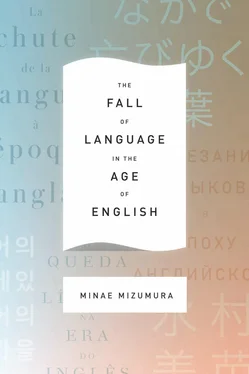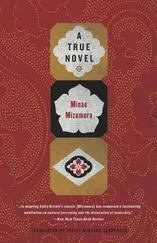THE ESCAPE FROM THE CHINESE IMPERIAL EXAMINATION SYSTEM
That the Japanese language remained for over a millennium merely a local language is perhaps typical. That its writing was created through the act of translating a universal language is indeed typical. What is surprising is the level of sophistication written Japanese attained. Usually, the nature of a local language is such that even if a learned man wrote in it, he would be writing not for his peers but rather for his wife or children. Yet Japanese developed into a language shared by male intellectuals.
To see how this turn of events came about, let us start by picturing the Japan archipelago lying in the sea by the Chinese mainland. If its proximity allowed it to become part of the Sinosphere and acquire a written culture, its distance benefited the development of indigenous writing. The Dover Strait, separating England and France, is only 34 kilometers (21 miles) wide. A fine swimmer can swim across it. In contrast, the shortest distance between Japan and the Korean Peninsula is five or six times greater, and between Japan and the Chinese mainland, twenty-five times greater. The current, moreover, is deadly. The missions the Japanese government sent regularly to China between the sixth and ninth centuries were life-risking endeavors often ending in shipwreck. Japan’s distance from China gave it political and cultural freedom and made possible the flowering of its own writing.
Nowhere is the effect of Japan’s distance from the continent more manifest than in the country’s escape from the powerful pull of the imperial examination system invented by the Chinese. As is well known, the imperial examination was a means of soliciting the most brilliant minds from all over China to become high-ranking bureaucrats. The earliest example of democratic examinations in the world, the system demonstrates how advanced Chinese civilization once was. Begun in the sixth century, the examination system lasted for an amazing fourteen centuries and exerted control over Chinese politics and culture. The content of the examination changed little with the times, however, and once China entered modernity and fell prey to the imperialistic ambitions of the West, the system proved practically useless and was abolished in 1904. The imperial examination system became symbolic of the stagnation of Chinese civilization.
What concerns us is the relationship between such a system and the learned male population. Because the imperial examination was initially implemented to counter the power of the military, it was thoroughly literary in nature. The content was based on Confucian scholarship and required memorization of the Classics; the system produced not just officials but scholar-officials. On top of this, every conceivable mechanism encouraging fierce competition was built into the system: the examination was supposedly open to any male regardless of origin (though in reality only those of the learned class had the means to prepare for such an examination); once someone passed the exam, his entire clan would share in his power, glory, and wealth; and the top three successful candidates were assured particularly prestigious positions.
It is easy to see what would come out of such a system. Those in the learned class would select the brightest boy in the clan, and the whole clan would invest in his education. All across China, boys who particularly excelled in reading and writing would spend their entire childhood, youth, and even part of their adulthood studying single-mindedly for the examination. The average successful examinee was around thirty-five. That such a system lasted not only one or two hundred years but well over a millennium means that every bright male in the country was continually drawn deep into the changeless Chinese civilization — deep into the vast library of Classical Chinese writing.
Moreover, Classical Chinese was an “external language” even for Chinese themselves. For erudite Romans in the first century B.C.E., Seneca’s prose, literary as it was, must have been comprehensible by ear. But Classical Chinese texts, so concise and dense, had little tie to the spoken language of ordinary people at any point in history. This is true quite aside from the fact that the Chinese spoken languages — Cantonese, Shanghainese, Fukienese, Mandarin — vary so greatly that they could be considered different languages altogether. Thus, while preparing for the imperial examination enabled educated Chinese to communicate in a highly sophisticated manner, it hindered them from creating vernacular writing. Vernacular fiction began appearing only in the sixteenth century and was never held in high regard.
What would happen when countries surrounding China adopted such a system is then apparent. Their bilinguals — seekers of knowledge — would be absorbed into the Chinese library in a similar way. Without the participation of those bilinguals, writings in those countries’ local languages would inevitably fail to mature.
Both Korea and Vietnam, which are located on geographic extensions of the Chinese mainland, adopted the system, as did later the Ryūkyū Kingdom (present-day Okinawa), which is much closer to China than to Japan. The Japanese made an attempt to adopt the system once during the Heian period. Yet as the country stopped sending regular missions to China and centralized, direct ties with China gradually ended, there was no longer any incentive for Japanese to follow the Chinese model. This turn of events was a blessing for the Japanese language. Japanese bilinguals, because they were not forced to compete fiercely in order to excel in written Chinese, soon began to read and write in the local language as well. These men had no qualms about using hiragana, the “women’s hand.” On the contrary, they apparently used it whenever occasion permitted.
When the first imperial anthology of waka poetry was compiled, the poet Ki no Tsurayuki (872–945) wrote two prefaces, one in Chinese and the other in Japanese, mostly hiragana. He then went on to write the groundbreaking Tosa Diary ( Tosa nikki , 935), which describes, in Japanese, a long journey to the capital. (Some scholars speculate that he kept a diary in Chinese during his travels and rewrote it after his return.) Moreover, to experiment once again in writing hiragana-based Japanese, he went so far as to adopt the persona of a woman. Writing a diary was something men did more often than women, but male diarists of his time invariably wrote in either Chinese or Sinicized Japanese — never in hiragana.
The opening passage of Tosa Diary is quite perverse: “Men write diaries, but I, a woman, will try my hand at it too.” This one sentence, written mostly in hiragana, crystallizes the wonders of Japan’s literary history. Men were not “supposed” to be writing in hiragana, except when composing waka , but they were reading it (and probably writing it, too). Even before Tosa Diary , there already existed a collection of anonymous short stories called The Tales of Ise ( Ise monogatari , mid- to late ninth century). Because each story is a narrative revolving around waka , it is written in hiragana, but the collection, sometimes bawdy, was certainly not meant just for women. Nothing in Tosa Diary suggests that it was meant just for women either. And there is more. Even women authors, who always wrote in hiragana, were far from having a solely female readership in mind. The two lady rivals, Murasaki Shikibu, author of The Tale of Genji , and Sei Shōnagon, author of The Pillow Book ( Makura no sōshi , 1002), were both well versed in Chinese Classics — though they made their erudition known only by slipping in allusions here and there — and they reveled in compliments from male readers. By writing brilliantly in their own language, they must have given men the desire to do the same. The binary of the universal and the local did not coincide with the binary of the educated and the uneducated in Japan.
Читать дальше












